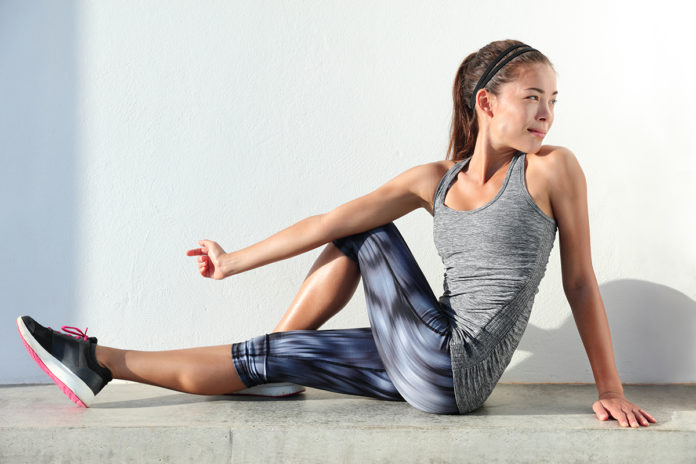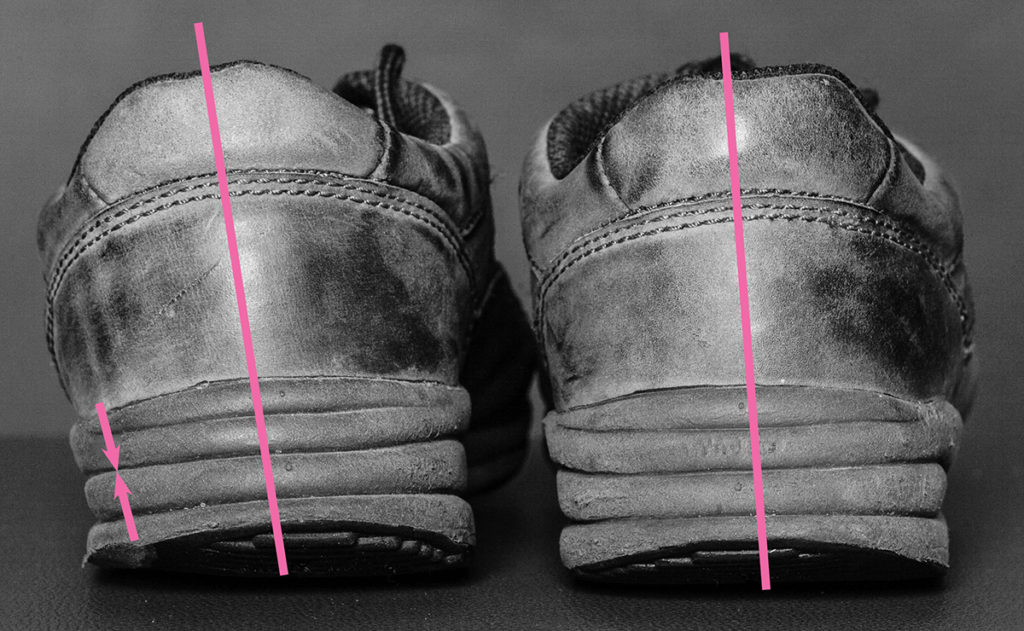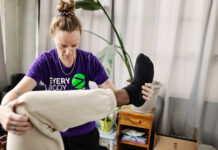
Having problems progressing with your training? Can’t improve your time in competition? Getting recurrent pain or injuries, involving the same sites? If so, it’s time to check your alignment, given that in over 80 per cent of us the pelvis is not aligned and so is malaligned. Sports like running are more likely to get you into trouble because the high impact forces worsen the abnormal stresses your body is subjected to by the changes that come with malalignment. Here are some typical problems.
A SHIFT IN HOW YOU BEAR WEIGHT
Many runners see a shift in weight bearing which involves a tendency for the right foot to roll inward (pronation) and the left outward (supination). The right sole wears down toward the inside, the left toward the outside (see sidebar). The right foot may end up pronating excessively, pulling on inner muscles, nerves, tendons, and ligaments, from the ankle up to the groin. With time, increased workouts, or competition, these structures can become inflamed and outright painful, and may present as a plantar fasciitis, Achilles tendonitis, inner-knee ligament pain, or a “groin strain” on the right side. Pronation also causes the knee to buckle inward. This makes the kneecap track outward of the groove it rides up and down in, increasing tension in the patellar tendon, causing pain from the kneecap and/or tendon. In contrast, the left foot may supinate to the point of stressing the structures on the outside of the leg and result in pain from the outer hip, knee, or shin region.

TILTING OF THE PELVIS AND COMPENSATORY CURVES OF THE SPINE
With malalignment, the pelvis often ends up tilting down to the right or left side, causing a formation of curves in the spine to compensate for this tilt. The changes interfere with normal transfer of weight upward through the hip, sacroiliac joint, and spine after you land on the right or left foot. The abnormal forces on these sites can eventually cause pain, typically felt at the base of the neck and mid back (where the curves in the spine change direction) and the low back (usually felt to either side of the spine or in one buttock).
AN APPARENT LEG LENGTH DIFFERENCE (LLD)
The pelvic shift changes the position of the hip sockets and leads to a difference in leg length. The “long-leg syndrome” is associated with increased stress and earlier wear and tear of the hip joint on the long-leg and the knee on the short-leg side.
A SIDE-TO-SIDE DIFFERENCE IN MUSCLE AND LIGAMENT TENSION
With malalignment, resting tension (i.e.when relaxed muscles are stretched) increases in certain muscles and ligaments on one side, with a slackening or laxity on the other. For example, tension is increased in the left muscle/tendon unit that runs across the outside of the hip and knee joint – all or parts of it can become irritated and tender but may only become outright painful whenever you increase training or go for a longer run.
A SIDE-TO-SIDE DIFFERENCE IN MUSCLE STRENGTH
A muscle on one side will be noticeably weaker than its partner on the other. For example, the two muscles that help control how much your foot can roll inward are weaker on the right side, increasing the chance of excessive right pronation. The muscle that controls how much the foot rolls outward is weaker on the left side, increasing the risk of an ankle sprain. The weak muscles also tire and get overworked more easily, which can present as shin splints.
A SIDE-TO-SIDE DIFFERENCE IN JOINT RANGES OF MOTION
In the legs the difference relates, in part, to a reorientation of the hip sockets. For example, if the left hip bone ends up getting stuck turned outward from midline, the rim of the socket changes position so that it now limits how far you can swing the left leg forward compared to the right. You may feel a block to that forward movement and possibly pain in the left hip/groin area, both more likely when running faster or increasing your stride length. On the side tending to supinate, the foot and ankle joints are more rigid and less able to absorb shock on impact, increasing the risk of a stress fracture.
SUMMARY
Malalignment causes a number of unwanted changes that, together, increase your risk of injury and affect your style/ease of running and energy efficiency. Given that over 80 per cent of us may be out of alignment, it’s a good idea to get a proper assessment with a manual therapist and, if needed, get started on an appropriate treatment program. You can learn some simple self-assessment and treatment techniques to use on a day-to-day basis. This allows you to detect any recurrences early and either correct them yourself or seek help before pain or other symptoms recur or get worse.
Following realignment and the return of your normal weight-bearing pattern, previously supplied shoes and/or orthotics are likely to be inappropriate and will need to be replaced. The old gear puts you at risk of going out of alignment again. With proper guidance and your day-to-day involvement, your chances of eventually staying in alignment, improving your times, and finally being able to realize your full running potential are very good.
Read this story in the digital edition of IMPACT Magazine.
IMPACT Magazine’s 2021 Running Issue
Looking for running inspiration? Training for a race? We have first-rate training programs designed by some of the best running coaches for your next 10K, Half-Marathon, Marathon and 70.3 distances, plus an epic Road Running Shoe Review to help you get started on the right foot. Plus – our annual RACE SOURCE GUIDE features hundreds of races that you can participate in from virtual to in-person.

















